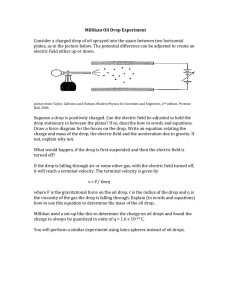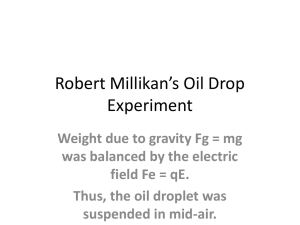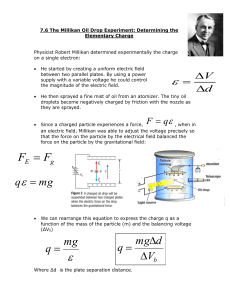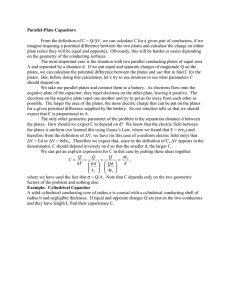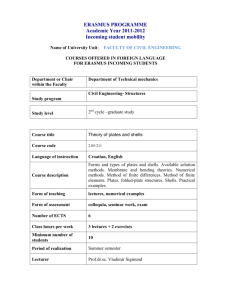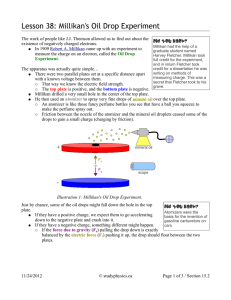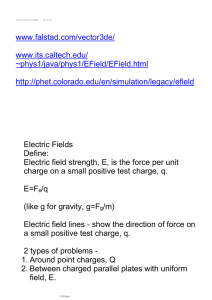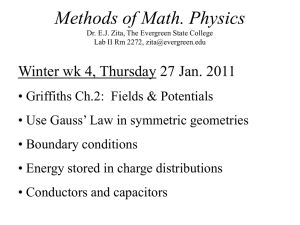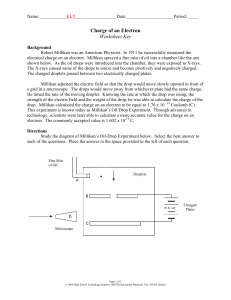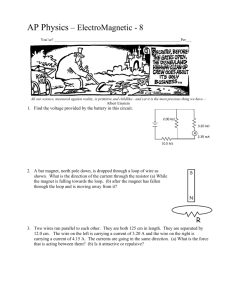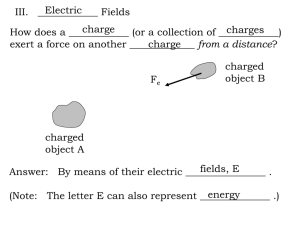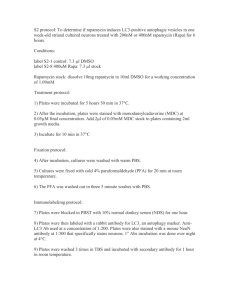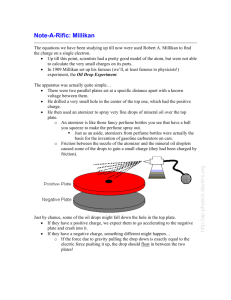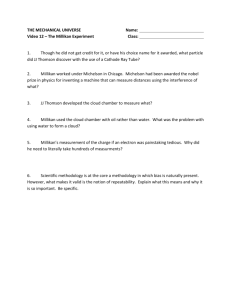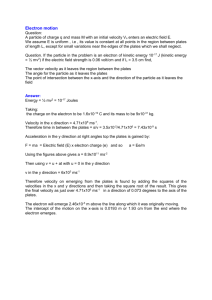TAP 409- 4: Millikan`s oil drop experiment
advertisement
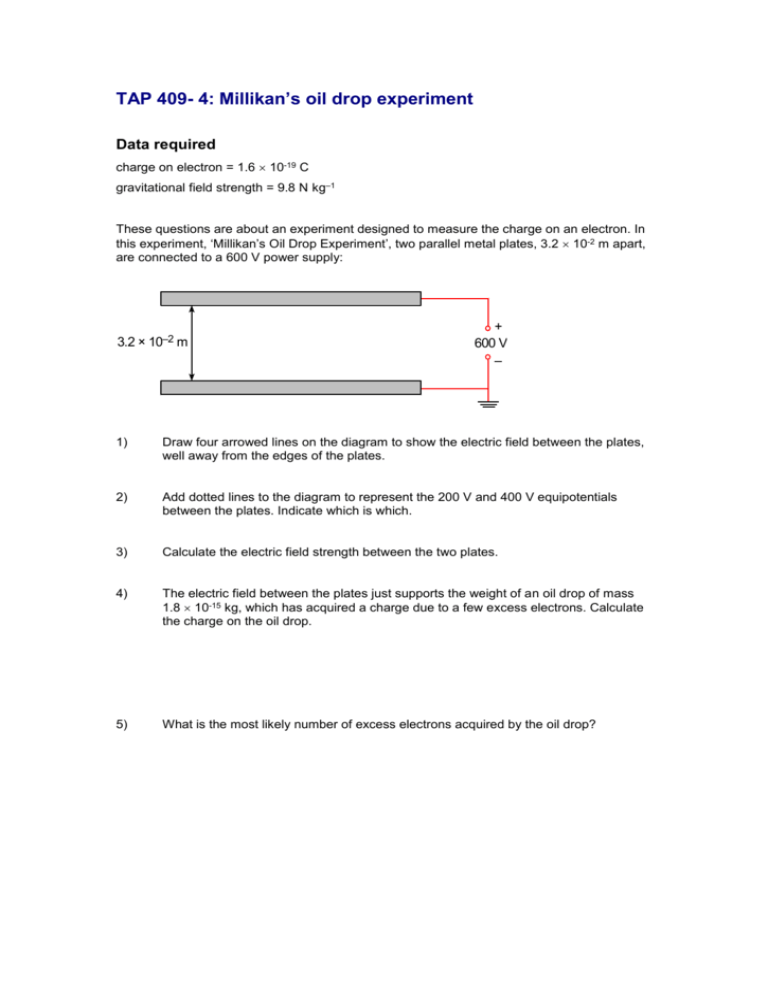
TAP 409- 4: Millikan’s oil drop experiment Data required charge on electron = 1.6 10-19 C gravitational field strength = 9.8 N kg–1 These questions are about an experiment designed to measure the charge on an electron. In this experiment, ‘Millikan’s Oil Drop Experiment’, two parallel metal plates, 3.2 10-2 m apart, are connected to a 600 V power supply: 3.2 × 10–2 m + 600 V – 1) Draw four arrowed lines on the diagram to show the electric field between the plates, well away from the edges of the plates. 2) Add dotted lines to the diagram to represent the 200 V and 400 V equipotentials between the plates. Indicate which is which. 3) Calculate the electric field strength between the two plates. 4) The electric field between the plates just supports the weight of an oil drop of mass 1.8 10-15 kg, which has acquired a charge due to a few excess electrons. Calculate the charge on the oil drop. 5) What is the most likely number of excess electrons acquired by the oil drop? Practical advice Questions 1–5 deal with the simple principles involved in Millikan’s experiment Answers and worked solutions 3.2 × 10–2 m 400 V 200 V + 600 V – 1) Orange lines above, with arrows 2) Green lines above, without arrows 3) E = V/d = 600 / 3.2 x 10-2 = 18,750 V m-1 = 1.9 x 104 V m-1 (2sf) 4) electric force upward = weight downward EQ = mg Q = mg/E = 1.8 x 10-15 x 9.81 / 1.9 x 104 = 9.4 x 10-19 C 5) 9.4 x 10-19 / 1.6 x 10-19 = 5.9 Therefore, most likely number of extra electrons = 6. External references This activity is taken from Advancing Physics chapter 16, 60S
